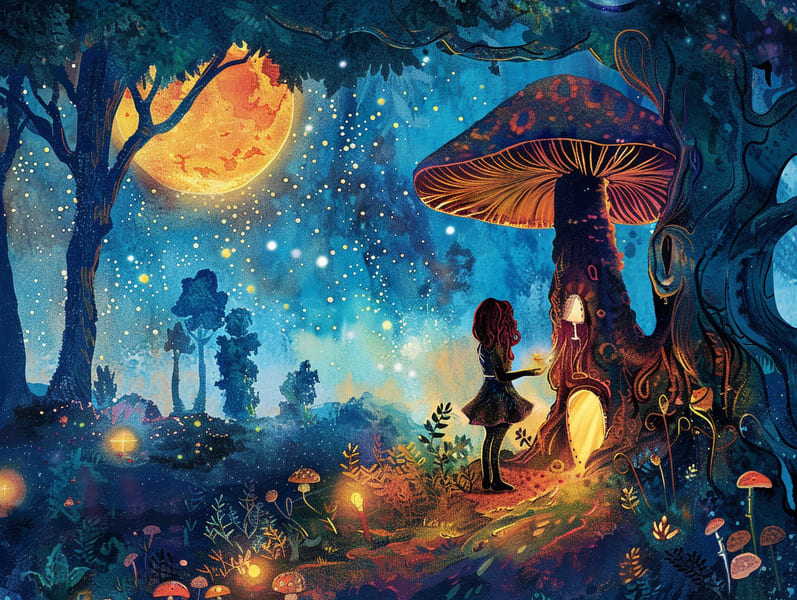
Vintage fairy tales have long histories. These stories have been recounted from one generation to the next millennia before they were ever inscribed. They were born from a variety of societies, including Indigenous traditions. They were initially transmitted among elders, often carrying themes and messages concerning the societal norms and beliefs of the time.
The Grimm brothers, Jacob and Wilhelm (the Grimm brothers), were among the first to collect and release many of these beloved fairy tales. Their published works, "Grimm's Story Collection," included classics like "Ashenputtel," "The Bread Crumb Trail," and "Snow White," which have since become classics in the world of traditional fairy tales. Similarly, Andersen's delightful stories, such as "The Mermaid's Tale," and "The Little Duckling," have captured hearts worldwide, securing their place in the pantheon of classic fairy tales.
Despite their age, classic fairy tales remain as impactful as ever, especially as children's night stories. These charming stories are now available in different formats, including vividly illustrated books, charming animations, and online fairy tales.
Their unwavering allure can be linked to several charming aspects:
Ethical Lessons: Classic fairy tales often convey important moral lessons. Narratives like "The Tale of the Boy Who Cried Wolf" teach the virtue of truth, while "The Race of the Tortoise and the Hare" emphasize the qualities of steadfastness and humbleness. These stories offer little ones clear distinctions between truth and falsehood, developing their moral compass in a tender yet important way.
Sympathy and Perception: Old fairy tales frequently feature heroes facing struggles and tests, prompting kids to resonate with their struggles and boost their triumphs. For instance, "Beauty's Beast" emphasizes the benefit of looking past the exterior to perceive the inner core of a being, encouraging sympathy and awareness.
Cultural Insights: Many classic fairy tales are rich in the cultural contexts from which they came. Learning from these narratives can provide captivating looks into different heritages, building a sense of world respect and perception.
Creativity and Imagination: The whimsical elements in traditional fairy tales—talking beasts—provoke children’s imaginations. These stories take readers to otherworldly realms, unleashing inventive dreams and a sense of wonder that remains a lifetime.
Old fairy tales are not only charming but also instructive. They provide delightful tools in building various cognitive and emotional skills in young ones. When fairy tales are narrated, they advance language acquisition by offering new phrases and complex sentence structures. This practice also fosters listening abilities and attention, as children hang on every word, anxious to see what happens next.
Furthermore, debating the themes and characters of traditional fairy tales can sharpen intellectual skills and problem-solving abilities. Kids are shown to find patterns, forecast, and realize cause and effect. These examinations also advance kids voice their thoughts and feelings, fostering their emotional intelligence.
In today’s cyber age, the proliferation of internet fairy tales has made these narratives more accessible than ever. Websites and software present large libraries of old fairy tales that can be enjoyed or listened on anytime, anywhere. Fairy tales voiced are particularly sought after, offering an fun way for kids to appreciate these Grimm's fairy tales collection bewitching tales. Spoken stories and read-aloud videos move characters and settings to life, often complemented by magical audio effects and harmonies that elevate the story journey.
The lasting allure of old fairy tales lies in their ability to adapt to the present while continuing with their core values. Contemporary reimaginings of these fairy tales often present more diverse figures and modern settings, making them relevant to today’s audience. However, the core values of daring, kindness, and fair play remain unchanged, continuing to touch young readers of all ages.
Fairy tales also offer a sense of solace and knowability. They share a tidy narrative with a obvious beginning, middle, and end, often ending with the resolution of conflicts and the triumph of right over wrong. This steadiness can be easing for young ones, offering a sense of constancy in an variable world.
Classic fairy tales continue to fascinate and teach new generations, maintaining their majesty and impact in modern society. As kids' bedtime tales, they make accessible a perfect blend of charm and enlightenment, advancing moral values, empathy, and creativity. The existence of online fairy tales and the likability of fairy tales spoken confirm that these old fairy tales remain reachable to new generations.
By holding onto and distributing these narratives, we continue to honor the rich tapestry of human imagination and cultural heritage. Whether you are experiencing a vibrantly illustrated book, exploring a cyber library, or listening to an audiobook, the mystique of famous fairy tales is always within reach. These narratives teach us of the undying force of narratives and its ability to bind us across generations and cultures.
Even if you are delving into a gorgeously illustrated book, viewing a web collection, or listening to an read-aloud story, the appeal of popular fairy tales is always within reach.
These narratives teach us of the ageless strength of fairy tales and its ability to bond us across eras and regions, making a tie that captivates and teaches alike.